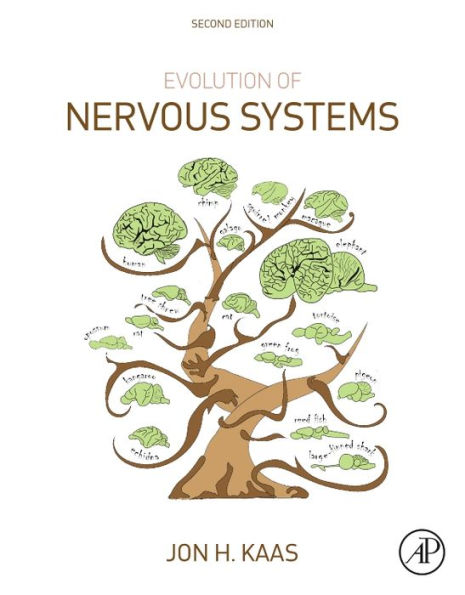In the first edition of this important reference work, over 100 distinguished neuroscientists assembled the current state-of-the-art knowledge on how nervous systems have evolved throughout the animal kingdom. This second edition remains rich in detail and broad in scope, outlining the changes in brain and nervous system organization that occurred from the first invertebrates and vertebrates, to present day fishes, reptiles, birds, mammals, and especially primates, including humans.
The book also includes wholly new content, fully updating the chapters in the previous edition and offering brand new content on current developments in the field. Each of the volumes has been carefully restructured to offer expanded coverage of non-mammalian taxa, mammals, primates, and the human nervous system.
The basic principles of brain evolution are discussed, as are mechanisms of change. The reader can select from chapters on highly specific topics or those that provide an overview of current thinking and approaches, making this an indispensable work for students and researchers alike.
In the first edition of this important reference work, over 100 distinguished neuroscientists assembled the current state-of-the-art knowledge on how nervous systems have evolved throughout the animal kingdom. This second edition remains rich in detail and broad in scope, outlining the changes in brain and nervous system organization that occurred from the first invertebrates and vertebrates, to present day fishes, reptiles, birds, mammals, and especially primates, including humans.
The book also includes wholly new content, fully updating the chapters in the previous edition and offering brand new content on current developments in the field. Each of the volumes has been carefully restructured to offer expanded coverage of non-mammalian taxa, mammals, primates, and the human nervous system.
The basic principles of brain evolution are discussed, as are mechanisms of change. The reader can select from chapters on highly specific topics or those that provide an overview of current thinking and approaches, making this an indispensable work for students and researchers alike.

Evolution of Nervous Systems
2007
Evolution of Nervous Systems
2007Hardcover(2nd ed.)

Product Details
| ISBN-13: | 9780128040423 |
|---|---|
| Publisher: | Elsevier Science |
| Publication date: | 12/30/2016 |
| Edition description: | 2nd ed. |
| Pages: | 2007 |
| Product dimensions: | 9.60(w) x 11.80(h) x 5.60(d) |
